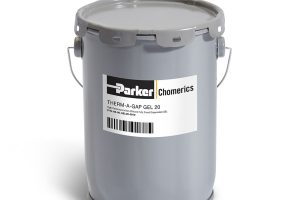Combining AI with thermal imaging can ‘flesh out’ pedestrians to improve automotive safety systems at day and by night, says Wade Appelman of Owl Autonomous Imaging. Why are automotive manufacturers interested in a technology that combines expensive, cumbersome thermal imaging and complex, computer-hungry AI to solve a straightforward problem such as pedestrian automatic emergency braking (PAEB)? The answer is because ...
Tag Archives: thermal
Solid-state ‘thermal transistor’ controls heat flow with ±2.5V
UCLA researchers have made an electrically-controlled solid-state ‘transistor’ for thermal energy, with a heat-flow on-off ratio of >13:1 when controlled with a ±2.5V base bias at room temperature. The voltage-flow curve is almost a straight line, and operation at 1MHz has been demonstrated. “Precision control of how heat flows through materials has been a long-held but elusive dream for physicists ...
Thermal interface gel for thin bond lines
Chomerics is aiming its latest thermal interface gel at thin heatsink bonds. GEL 50TBL (TBL – thin bond line) offers 5W/m.K bulk thermal conductivity and, “at a minimum bond line thickness of 0.05mm, the apparent thermal conductivity exceeds 10W/m.K”, according to the company. However, “the material is primarily for thin bond lines and is not typically intended for use as ...
Squashy thermal pad achieves 8.3W/m.K
Chomerics has announced a thermal gap filler pad material with a conductivity of 8.3W/m.K and 40 Shore 00 hardness. “With the highest available thermal conductivity in its product family, ‘PAD 80’ maintains low compression forces and conformability between mating surfaces,” said Chomerics. “Very low compression force means the product will deflect under assembly pressure, minimising stress on components, soldered joints ...
Thermal interface material flows fast for production
Chomerics has unveiled a thermal interface gel aimed at high-throughput production. Called GEL 60HF (HF = high flow), long-term thermal stability is claimed by the company, as are properties suited to re-work and field repair. “The paste-like consistency enables tightly controlled dispensing and accurate material placement during assembly,” it said. “Notably, the product requires low compressive force to deflect under ...
Photothermal resonance for micro-actuators?
Researchers in Japan have exploited resonance to get large amplitude motion from rod-like microcrystals, in a way that could be useful in soft robotics according to Waseda University. Using UV light, they set out to bend a particular type of 2,4-dinitroanisole crystals – chosen because of their large thermal expansion coefficient. The UV wavelength selected matches an absorption peak in ...
Automotive heatsink paste
Chomerics has announced a thermal interface material with thermal cycling and high temperature performance aimed at automotive components. Called ‘GEL 20’, it is a one-component material that requires no secondary cure and offers 2.4W/mK conductivity. Operation is over -55 to +200°C. “The material’s heavy paste-like consistency enables controlled dispensing, applied in variable thicknesses up to 4mm,” according to the company. ...
Thermal interface paste has no silicon
Chomerics has unveiled a silicone-free thermally-conductive gel for optical equipment, camera modules, sensors, data storage devices and other applications at risks of silicone oil migration or contamination, as well as in silicone-free facilities. It is intended to conform to rough surface irregularities, displace air gaps, and take up manufacturing tolerances on. Bond lines as thin as 150μm can be accommodated. Urethane-based ...
Updated: Current-induced cooling shifts heat with ‘ionocaloric Stirling cycle’
Shunting ions around with electricity could produce enough heat transfer to replace greenhouse gas compression in domestic refrigerators, according to the US Lawrence Berkeley National Laboratory (LBL). The technology has been dubbed ‘ionocaloric cooling’. While warming and cooling a solid, liquid or gas can be used to shift some heat, much more can be shifted by a ‘phase change’ – ...
Clear video about thermal voltage errors in relays
Reed relay maker Pickering has produced a video explaining voltage errors due to thermal effects in relays – where they come from, how to measure them, and how to reduce them. Although intended to promote the company’s own products, there is a lot of general interest in there, for which Pickering deserves credit. Spoiler: Operating the relay from outside using ...
 Electronics Weekly Electronics Design & Components Tech News
Electronics Weekly Electronics Design & Components Tech News









